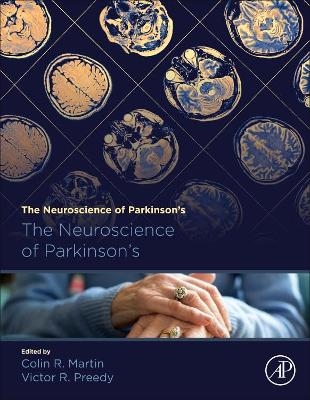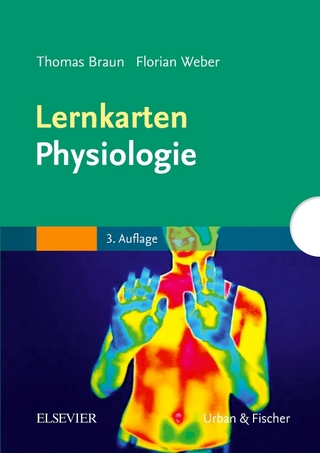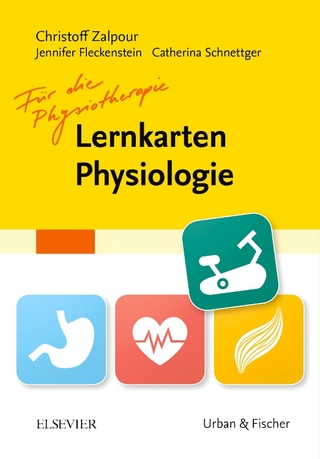
The Neuroscience of Parkinson's Disease
Academic Press Inc
978-0-12-815958-3 (ISBN)
Colin R. Martin RN, BSc, MSc, PhD, MBA, YCAP, FHEA, C.Psychol, AFBPsS, C.Sci is Professor of Clinical Psychobiology and Applied Psychoneuroimmunology and Clinical Director of the Institute of Health and Wellbeing at the University of Suffolk, UK. He is a Chartered Health Psychologist and a Chartered Scientist. He also trained in analytical biochemistry, this aspect reflecting the psychobiological focus of much of his research within mental health. He has published or has in press well over 300 research papers and book chapters. He is a keen book author and editor having written and/or edited more than 50 books. These outputs include the prophetic insight into the treatment of neurological disease, Handbook of Behavior, Food and Nutrition (2011), Nanomedicine and the Nervous System (2012), Oxidative Stress and Dietary Antioxidants in Neurological Disease (2020), Zika Virus Impact, Diagnosis, Control and Models (2021), Factors Affecting Neurodevelopment: Genetics, Neurology, Behavior and Diet (2021), Diagnosis and Treatment of Spinal Cord Injury (2022), The Neurobiology, Physiology, and Psychology of Pain (2022) and The Handbook of Lifespan Cognitive Behavioral Therapy: Childhood, Adolescence, Pregnancy, Adulthood, and Aging (2023). Professor Martin is particularly interested in all aspects of the relationship between underlying physiological substrates and behavior, particularly in how these relationships manifest in both acute and chronic psychiatric disorder. He has published original research germane to significant mental health disorders including the areas of schizophrenia, anxiety, depression, self-esteem, alcohol and drug dependency, high secure forensic mental health and personality disorder. He has a keen interest in the impact of postviral illness and is actively involved in clinical research post-Covid pandemic and in particular, the impact of Long Covid on psychological, neurological, physiological and social functioning. He is involved in collaborative International research with many European and Non-European countries. Victor R. Preedy BSc, PhD, DSc, FRSB, FRSPH, FRSC, FRCPath graduated with an Honours Degree in Biology and Physiology with Pharmacology. After gaining his University of London PhD, he received his Membership of the Royal College of Pathologists. He was later awarded his second doctorate (DSc), for his contribution to protein metabolism in health and disease. He is Professor of Clinical Biochemistry (Hon) at King’s College Hospital and Emeritus Professor of Nutritional Biochemistry at King’s College London. He has Honorary Professorships at the University of Hull, and the University of Suffolk. Professor Preedy was the Founding Director and then long-term Director of the Genomics Centre at King’s College London from 2006 to 2020. Professor Preedy has been awarded fellowships of the Royal Society of Biology, the Royal College of Pathologists, the Royal Society for the Promotion of Health, the Royal Institute of Public Health, the Royal Society for Public Health, the Royal Society of Chemistry and the Royal Society of Medicine. He carried out research when attached to the National Heart Hospital (part of Imperial College London), The School of Pharmacy (now part of University College London) and the MRC Centre at Northwick Park Hospital. He has collaborated with international research groups in Finland, Japan, Australia, USA, and Germany. To his credit, Professor Preedy has published over 750 articles, which includes peer-reviewed manuscripts based on original research, abstracts and symposium presentations, reviews and edited books.
Section 1 Parkinson’s Disease: Introductory Chapters1. A Short History of Parkinson’s Disease – from early 19th century and afterwards – an overview2. Living with Parkinson’s disease – from financial to emotional3. The epidemiology of Parkinson’s disease – an overview4. Clinical Features of Parkinson’s disease – an overview5. The natural history of Parkinson’s disease – an overview6. The prognosis of Parkinson’s disease – an overview7. The neurobiology of Parkinson’s disease – an overview8. The pathophysiology of Parkinson’s disease – an overview9. Molecular and cellular mechanisms associated with Parkinson’s disease – synuclein, amyloid protein, oligomers and beyond10. Quality of life in Parkinson’s disease11. Gait in untreated Parkinson’s disease12. Levodopa-induced dyskinesias13. Tremor in Parkinson’s disease14. The impact of Parkinson’s disease on the family and careers
Section 2 Biomarkers and Diagnosis15. Tissue biopsies as biomarkers in Parkinson’s disease16. Spinal fluid for biomarker discovery in Parkinson’s disease17. Clinical biomarkers in prodromal Parkinson’s disease18. The diagnosis of Parkinson’s disease19. Proteomics in Parkinson’s disease20. MicroRNAs as biomarkers in Parkinson’s diseases21. Phenotyping in Parkinson’s disease22. Diagnosis of speech disorders in Parkinson’s disease23. Identifying dementia in Parkinson’s disease24. Diagnosis of sleep disturbances in Parkinson’s disease25. Diagnosis of Parkinson’s disease using magnetic resonance imaging26. Use of ultrasound as a diagnostic tool in Parkinson’s disease27. Use of single-photon emission computerized tomography (SPECT) as a diagnostic tool in Parkinson’s disease28. Use of positron emission tomography (PET) as a diagnostic tool in Parkinson’s disease
Section 3 Pharmacological Treatments for Parkinson’s Disease29. Dopamine Agonists and Parkinson’s disease – an overview30. Management with Levodopa in Parkinson’s disease31. Management with ripinirole in Parkinson’s disease32. Management with pramipexole in Parkinson’s disease33. Management with rotigotine in Parkinson’s disease34. Management with apomorphine in Parkinson’s disease35. Management with MAO-B Inhibitors in Parkinson’s disease36. Management with COMT inhibitors in Parkinson’s disease37. Management with anticholinergics in Parkinson’s disease38. Management with amantadine in Parkinson’s disease
Section 4 Novel and Non-Pharmacological Therapies For Parkinson’s Disease39. Treatment with chelator in Parkinson’s disease40. Treatment with deep brain stimulation in Parkinson’s disease41. Olive leaf extract usage as an antioxidant and applications to Parkinson’s disease42. Treatment with Vitamin D for Parkinson’s disease43. Chemogenetics and applications for Parkinson’s disease44. Flavonoids and naringin usage in Parkinson’s disease45. Stem cells and applications to Parkinson’s disease46. Treatment with cannabis for Parkinson’s disease47. Treating sleep problems in Parkinson’s disease48. Perioperative treatments of Parkinson's disease49. Exercise and Parkinson’s disease50. Molecular aspects: CB2 receptors and neuroprotection in Parkinson’s disease
| Erscheint lt. Verlag | 4.12.2020 |
|---|---|
| Verlagsort | San Diego |
| Sprache | englisch |
| Maße | 216 x 276 mm |
| Gewicht | 3830 g |
| Themenwelt | Studium ► 1. Studienabschnitt (Vorklinik) ► Physiologie |
| Naturwissenschaften ► Biologie ► Humanbiologie | |
| Naturwissenschaften ► Biologie ► Zoologie | |
| ISBN-10 | 0-12-815958-8 / 0128159588 |
| ISBN-13 | 978-0-12-815958-3 / 9780128159583 |
| Zustand | Neuware |
| Informationen gemäß Produktsicherheitsverordnung (GPSR) | |
| Haben Sie eine Frage zum Produkt? |
aus dem Bereich


